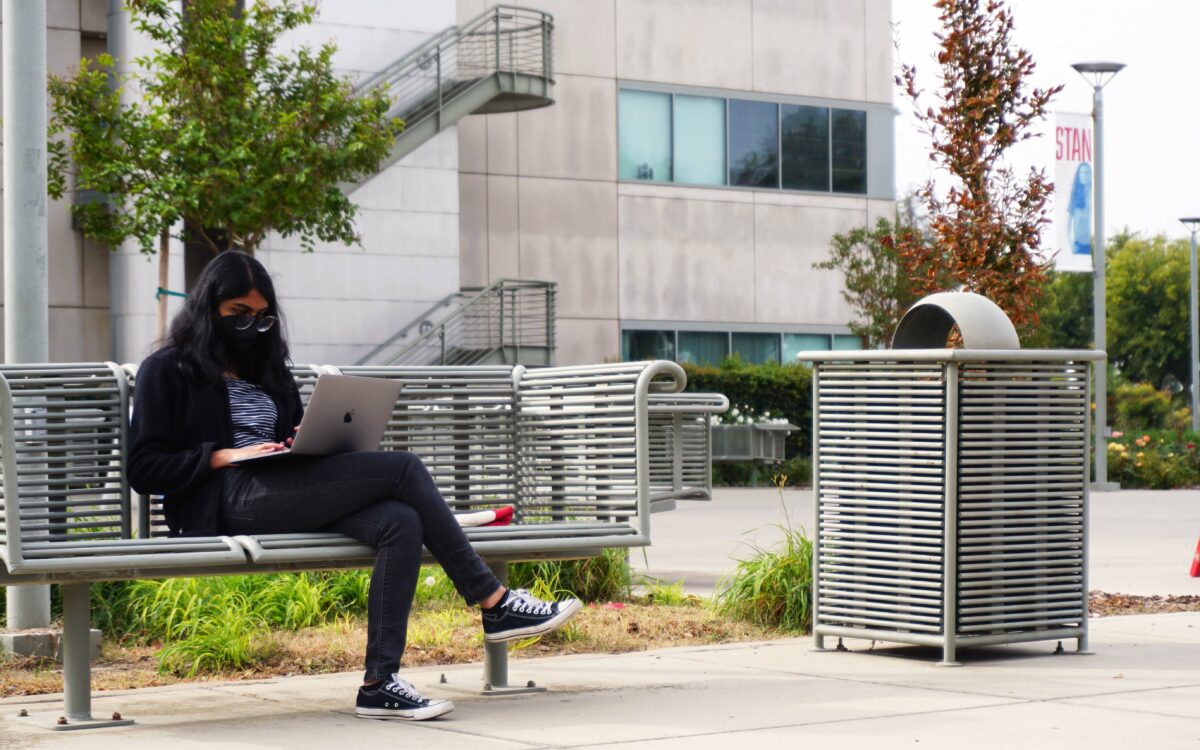Colleges nationwide and in California continue to lose undergraduate students, but the declines have slowed compared to the past two years when the pandemic upended education, a national report shows.
California saw a 1.1% drop in undergraduates since last year, a slower decline than last fall when enrollment dipped 5.9%, according to preliminary fall 2022 data released Thursday by the National Student Clearinghouse Research Center.
Nationally, the rate of undergraduate decline is also 1.1%, which is slightly less than the 1.7% drop in fall 2019.
For the first time since the pandemic, the declines nationwide are steeper at four-year schools than at community colleges, which have benefited from double-digit increases in dual enrollment high school students.
While highly selective colleges saw a small increase in students, less selective colleges saw greater losses.
“Undergraduate enrollments are still falling in this term. The rate of decline is lower than it’s been, but after two straight years of historically large losses in student enrollments, it’s particularly troubling that the numbers are not climbing back after this point, especially among freshmen,” said Doug Shapiro, executive director of National Student Clearinghouse Research Center.
“Although the decline has slowed and there are some bright spots, a path back to pre-pandemic enrollment levels is growing further out of reach,” he said.
The number of first-year students enrolled nationally dipped 1.5%.
While pandemic-era enrollment declines in higher education have begun to slow, they have not rebounded to pre-pandemic levels.
The 2022 data show four-year institutions were the hardest hit: There was a 3.1% dip among private nonprofit institutions, a 2.4% decline at public institutions and a 0.9% drop at for-profit institutions.
The report notes that an 11.5% jump in dual-enrolled high school students helped to soften the enrollment decline at community colleges to 0.4%. Community colleges also saw a 1.4% increase in students 18-20 years old. Freshman numbers increased 0.9%, which the report calls a sign that numbers are stabilizing at community colleges for the first time since the pandemic began in spring 2020.
“Many four-year institutions are still below their freshman numbers from last year, much less going back to their freshman numbers from 2019, which is very concerning,” Shapiro said. “And I think even the increase in community college freshmen is still small and nowhere near recovering from the huge declines in community college freshmen that we saw in fall of 2020 and fall of 2021.”
The fact that freshman enrollments are increasing at lower-cost community colleges while declining at four-year colleges suggests that costs are playing a role, said Shapiro.
“That’s highly suggestive to me that affordability is a part of the equation,” Shapiro said.
There was a 0.5% increase in 18- to 20-year-old undergraduates, most of them not freshmen. That suggests that some traditional-aged college students are returning after stopping their studies, Shapiro said.
“There’s some evidence for stopped-out students returning to their undergraduate programs,” he said. “But we’re not seeing the return of what we might call the lost freshman of fall 2020 and fall 2021. So they’re not coming in as freshmen at this point.”
White students had the steepest decline in undergraduate enrollment, dropping 3.6% since last year. Black student numbers declined by 1.6%. Both Asian and Native American students declined by 0.8%. The number of Latino students increased by 1.2%.
Female undergraduate students declined by 2.1%, while male students declined by 0.7%.

The center’s data comes from 63% of degree-granting institutions that receive federal funds and represents 10.3 million undergraduate and graduate students in the country. The California results are based on 47% of the institutions.
Some other highlights of the study:
- Undergraduate enrollment of historically Black colleges and universities grew 2.5% this fall, growth that is driven by a 6.6% increase in freshman enrollment at these campuses. This reversed the 1.7% decline of fall 2021. However, the report notes that the data from these institutions is built on a small base.
- Enrollment in Hispanic-serving institutions continues to decline: It was down 1.2% this fall compared with last fall’s decline of 4.8%.
- Enrollment in those studying computer and information science grew across the board since last fall: 10.1% for associate degrees, 9.5% for bachelor’s degrees and 21.4% for master’s degrees. At the associate level, construction trades are up 7.4%, and visual and performing arts are up 6.3%. At the undergraduate certificate level, business and management is up 6.9%, mechanic and repair technologies is up 3.3%, and precision production is up 7.2%.
- After seeing a small bump at the beginning of the pandemic, enrollment in those studying health declined at every level, including 5.4% among undergraduates. Enrollment for master’s degrees in education declined by 6.1%.
- Undergraduate enrollment is up 3.2% at primarily online institutions. It is driven by students aged 18-20 whose numbers at these institutions have swelled by 23.4% over the past two years. The report notes that data from these institutions are small and may change.
- Graduate enrollment dropped by 1% this fall but remains higher than it was in pre-pandemic 2019. Graduate schools saw a 2.7% growth in fall 2021. California is among the 26 states that saw a 4% drop in graduate students this fall compared with 2021.
